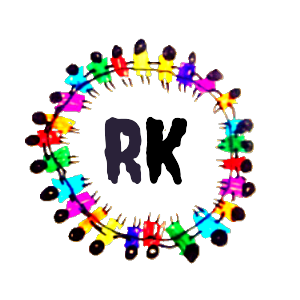In HTML, tables are created using the <table> element, which contains rows (<tr>), and each row contains cells (<td>) or header cells (<th>). Here’s how you can create a basic table using these elements and some common attributes:
1. <table> Element
The <table> element defines a table.
Attributes:
border: Specifies the width of the border around the table. Typically, CSS is used for styling borders, so this attribute is less commonly used.width: Specifies the width of the table.cellpadding: Specifies the padding between the cell content and the cell borders.cellspacing: Specifies the spacing between cells.
2. <tr> Element
The <tr> element defines a row in the table.
3. <th> Element
The <th> element defines a header cell in a table. Header cells are typically used to label rows or columns.
Attributes:
scope: Specifies the scope of the header cell. Common values includecol(column header),row(row header),colgroup, androwgroup.
4. <td> Element
The <td> element defines a standard data cell in a table.
Example:
<!DOCTYPE html>
<html>
<head>
<title>Table Example</title>
<style>
table {
border-collapse: collapse;
width: 100%;
}
th, td {
border: 1px solid black;
padding: 8px;
text-align: left;
}
</style>
</head>
<body>
<h2>Sample Table</h2>
<table border="1" cellpadding="5" cellspacing="0">
<tr>
<th>First Name</th>
<th>Last Name</th>
<th>Age</th>
</tr>
<tr>
<td>John</td>
<td>Doe</td>
<td>30</td>
</tr>
<tr>
<td>Jane</td>
<td>Smith</td>
<td>25</td>
</tr>
</table>
</body>
</html>In this example:
- The
<table>element defines the table with a border, cellpadding, and cellspacing attributes. - The
<tr>elements define the rows of the table. - The
<th>elements define header cells for the first row. - The
<td>elements define data cells for subsequent rows.
This is a basic example, but tables in HTML can be customized extensively using CSS for styling and JavaScript for dynamic behavior.
Step by Step
Certainly! Here’s a step-by-step explanation of how to create HTML tables:
Step 1: Start with the <table> Element
The <table> element is used to create a table. It acts as a container for all the rows and cells within the table.
<table>
<!-- Table content goes here -->
</table>Step 2: Define Table Rows with <tr> Elements
Inside the <table> element, you define rows using the <tr> (table row) element.
<table>
<tr>
<!-- Cells for the first row -->
</tr>
<tr>
<!-- Cells for the second row -->
</tr>
<!-- More rows can be added here -->
</table>Step 3: Add Table Cells with <td> or <th> Elements
Within each <tr> element, you add cells using either <td> (table data) elements for regular cells or <th> (table header) elements for header cells.
<table>
<tr>
<td>Cell 1</td>
<td>Cell 2</td>
<td>Cell 3</td>
</tr>
<tr>
<td>Cell 4</td>
<td>Cell 5</td>
<td>Cell 6</td>
</tr>
</table>Step 4: Customize Table Structure and Appearance
You can further customize the table structure and appearance using HTML attributes and CSS styles. Common attributes include:
border: Specifies the width of the border around the table.cellpadding: Specifies the padding between the cell content and the cell borders.cellspacing: Specifies the spacing between cells.
<table border="1" cellpadding="5" cellspacing="0">
<!-- Table content goes here -->
</table>Step 5: Adding Header Cells
In many cases, you’ll want to designate header cells for your table. Use the <th> element instead of <td> for these cells.
<table>
<tr>
<th>Header 1</th>
<th>Header 2</th>
<th>Header 3</th>
</tr>
<tr>
<td>Cell 1</td>
<td>Cell 2</td>
<td>Cell 3</td>
</tr>
</table>Step 6: Adding Spanning Cells
You can create cells that span multiple rows or columns using the rowspan and colspan attributes.
<table>
<tr>
<td rowspan="2">Cell 1</td>
<td>Cell 2</td>
<td>Cell 3</td>
</tr>
<tr>
<td>Cell 4</td>
<td>Cell 5</td>
</tr>
</table>Step 7: Additional Styling with CSS
To further customize the appearance of your table, use CSS styles. You can target specific elements within the table, such as <table>, <tr>, <th>, and <td>, to apply styling.
<style>
table {
width: 100%;
border-collapse: collapse;
}
th, td {
border: 1px solid black;
padding: 8px;
text-align: center;
}
</style>By following these steps, you can create structured and visually appealing tables in HTML to present your data effectively.

Leave a Reply